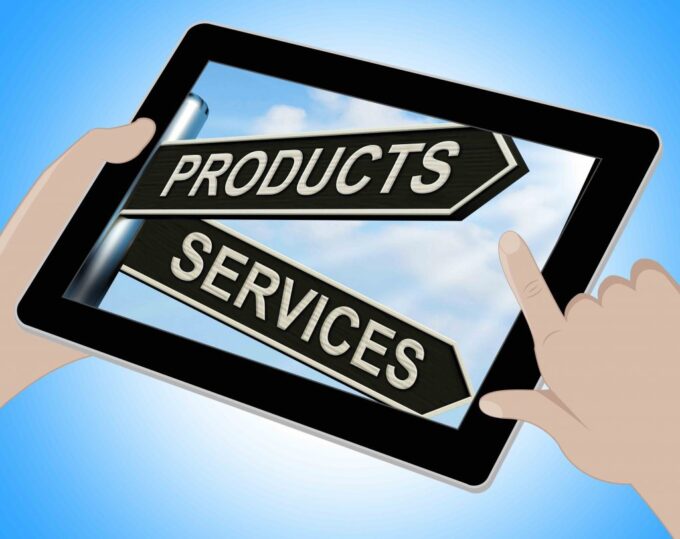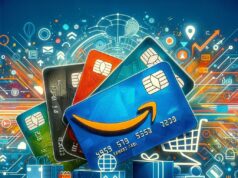In the last decade, brick-and-mortar retail faced a significant downturn, largely driven by the unstoppable growth of e-commerce giants like Amazon. As major players such as Sears, Toys “R” Us, and Barneys declared bankruptcy, the retail landscape experienced dramatic changes fueled by shifting consumer preferences and digital advancements.
However, predictions of the total demise of traditional retail commerce missed the mark. Though it did signal a retail apocalypse for those unable to adapt, this period brought about a time ripe with opportunities for innovation and growth.
For retailers, the key isn’t to resist this digital revolution but to embrace it. They must continue focusing on leveraging technology to improve efficiency and, more importantly, enhance the in-store shopping experience. Retailers must ask themselves: how can we refresh our value proposition to attract more customers and simultaneously boost profits through our physical stores?
Curate Products And Services You Can’t Get Elsewhere

Amid Amazon and Walmart dominating the mass market and discount retail, traditional retailers need to emphasize what has always made physical stores stand out: the discovery experience and exceptional service. Retailers who curate unique products not easily found online and deliver top-notch customer service will capture the attention of shoppers seeking a more immersive experience.
Ulta, a major player in the beauty industry, maintains exceptional growth in same-store sales by showcasing specialized brands in a welcoming environment with knowledgeable staff. Best Buy, in the face of tough competition from online-only electronics sellers, has revamped its stores into modern showcases for tech products. The trend of showrooming, where customers browse in-store but ultimately buy online for better prices, decreases significantly when retailers offer compelling reasons to make immediate purchases.
Leverage Stores For Faster, Flexible Delivery
The vast infrastructure of traditional retail chains, with their multitude of stores and prime real estate, becomes a key facilitator for faster and more adaptable delivery options. This directly addresses one of the primary draws of online shopping—convenience—while also directing valuable foot traffic to brick-and-mortar stores.
Nordstrom stands out in this regard, having invested in capabilities such as enabling online purchases to be picked up in-store, boosting their overall integrated retail approach. Research indicates that 73% of shoppers use various shopping channels simultaneously, highlighting the crucial role that partners like Instacart and DoorDash play in reshaping physical stores into essential points for efficient last-mile delivery.
Introduce Digital Tools for Enhanced Personalization

Rather than representing an existential threat, digital channels can actually complement physical stores. The fashion and beauty industry does an amazing job mixing the two. Take Zara, the global apparel retailer, for example. Despite its parent company Inditex raking in nearly 8 billion euros in online sales, Zara maintains the pivotal role of its stores in driving growth. By seamlessly connecting brick-and-mortar and online shopping through innovations like connected dressing rooms, in-store pickup options, and integrated inventory systems, brands create a hybrid experience where physical locations continue to excel in generating revenue.
Sephora’s mobile app assists in-store shoppers by providing reviews and recommendations as they browse through aisles. Designer Rebecca Minkoff’s high-tech stores incorporate self-service checkouts and intelligent dressing rooms to enhance personalization. The convergence of the digital and physical realms further fuels the desire for experiences and conveniences that cannot be replicated through any single channel alone.
Harness Data for Tailored Experiences

In an era where data reigns supreme, retailers must harness its power to craft customized and personalized experiences for their customers. Through the use of advanced analytics, they can unravel consumer behavior patterns, preferences, and past purchasing histories. This data-driven strategy empowers retailers to tailor interactions, suggest products, and anticipate customer needs, whether online or in-store.
For instance, major retailers like Target and Amazon employ machine learning algorithms to analyze massive datasets, accurately predicting consumer preferences. By incorporating this wealth of information into the in-store experience, retailers can provide personalized recommendations, targeted promotions, and exclusive offers, ultimately boosting customer satisfaction and driving sales.
Moreover, this data-driven approach enables retailers to not only understand customers’ current needs but also predict future trends, allowing for proactive strategies that resonate with evolving consumer preferences. By staying ahead of the curve and utilizing this wealth of information, retailers can continually refine their offerings and create even more meaningful interactions, fostering lasting relationships with their customer base.
Foster Community and Engagement
Successful retailers are going beyond mere transactions; they’re actively cultivating communities within their physical spaces. They’re turning stores into vibrant hubs where customers do more than just shop—they interact, learn, and connect with others who share their interests. Through hosting events, workshops, and interactive sessions, retailers create a sense of community and shared experiences, fostering lasting loyalty.
Apple is a prime example of this approach, turning its stores into bustling community spaces by offering coding classes, music events, and product workshops. By nurturing this lively community, retailers can elevate their stores into destinations, not just places to shop, attracting customers not just for products but for the immersive experiences they offer.
Promote Sustainability and Ethical Practices

The modern consumer is increasingly mindful of sustainability and ethical considerations. In response, retailers are not just offering sustainable products but also integrating eco-friendly practices across their operations. By demonstrating a commitment to social and environmental responsibility, retailers can appeal to a growing audience seeking ethical products and conscientious shopping experiences.
Patagonia serves as a standout example, placing sustainability at the forefront by using recycled materials and championing environmental causes. By embracing these values, retailers can attract environmentally conscious consumers, fostering greater brand loyalty and contributing positively to the planet.
A Bright Future for Retailers Embracing Innovation
Do the increasing closures of stores signal a struggle for traditional chains? Definitely, especially for those lacking vision or the drive to adapt. However, for brands taking the chance to create a connected, tech-enhanced in-store experience that makes shopping more engaging, personalized, and convenient, consumer demand and profits are bound to rise.
By highlighting the distinct advantages of physical stores—like exceptional service, interaction, and immediate satisfaction—retailers can not just survive the disruption but thrive within it. While the idea of a retail apocalypse hangs over slower industry players, strategic reinvention ensures that traditional stores can and will endure.









